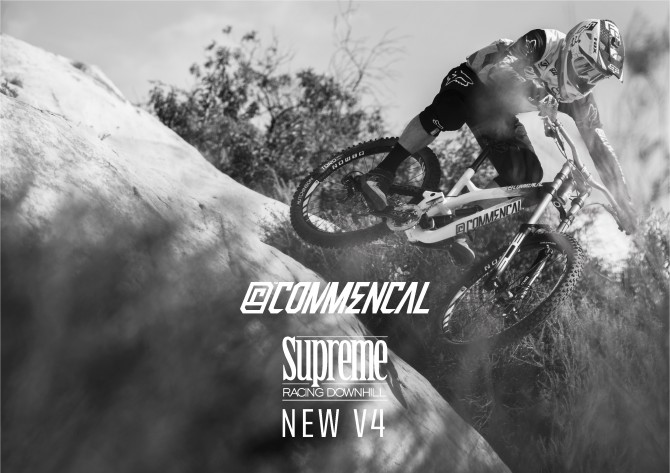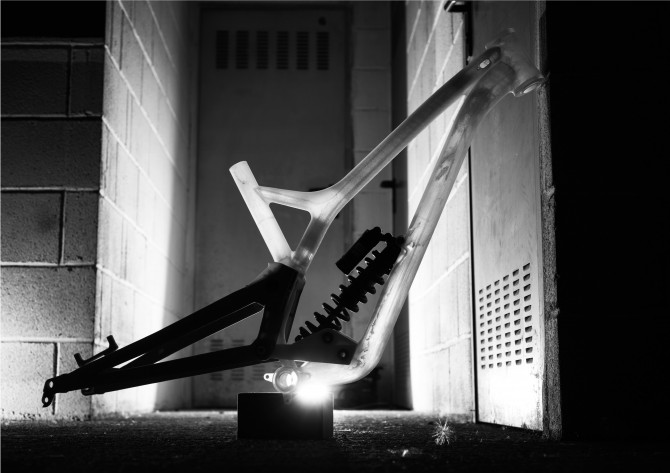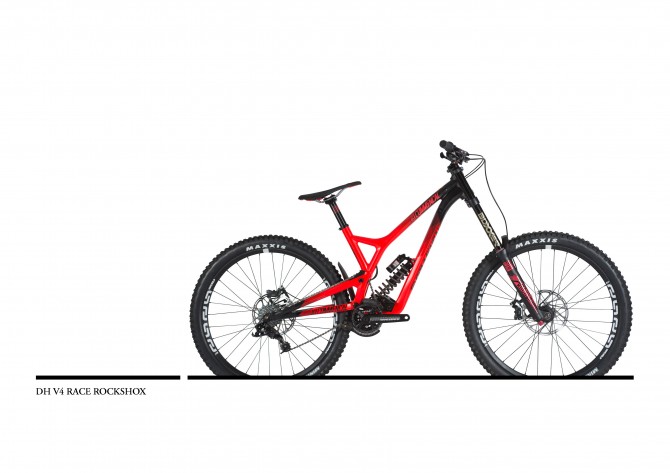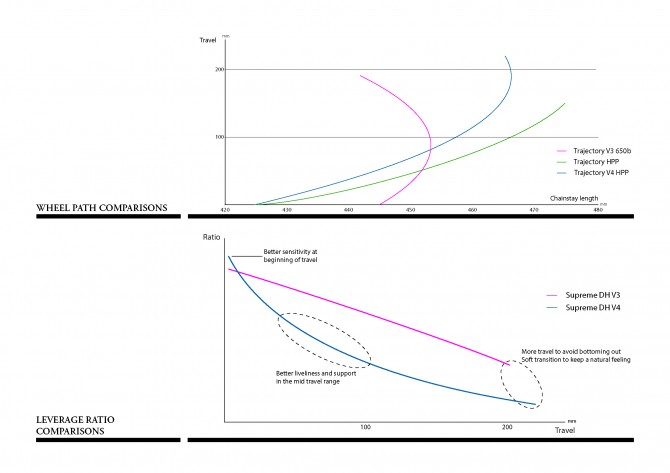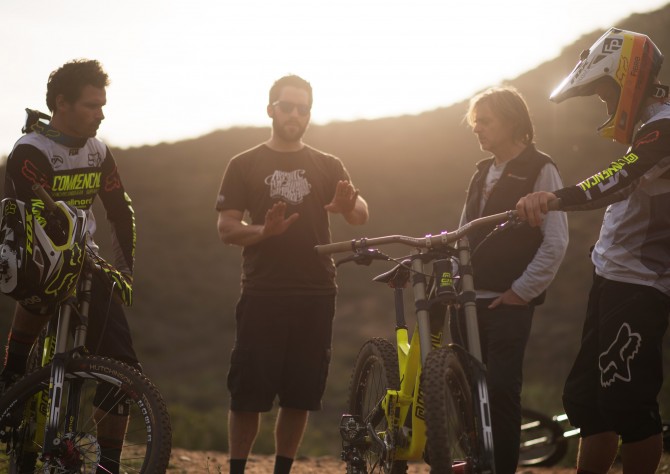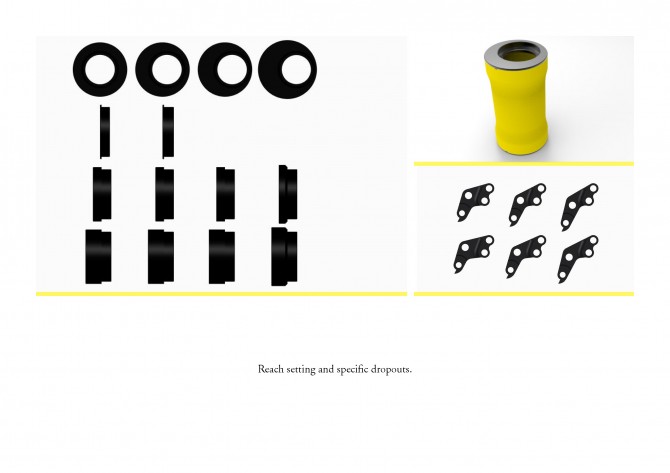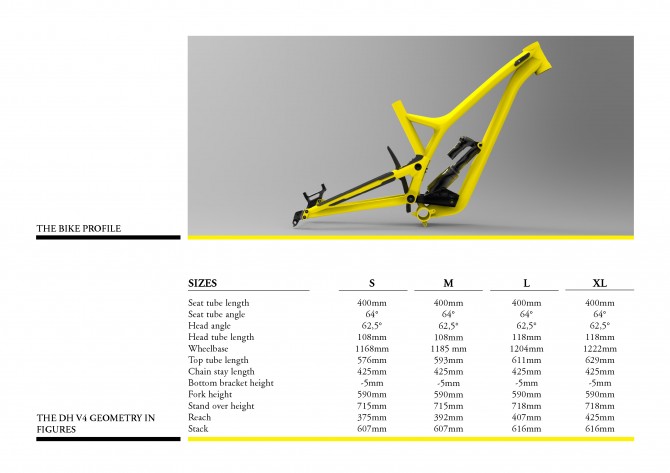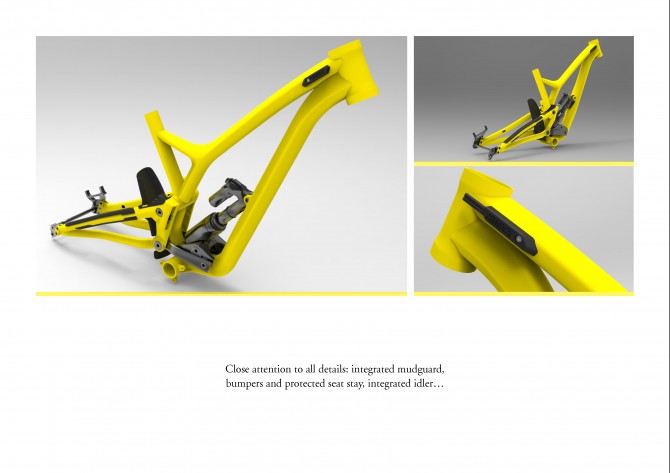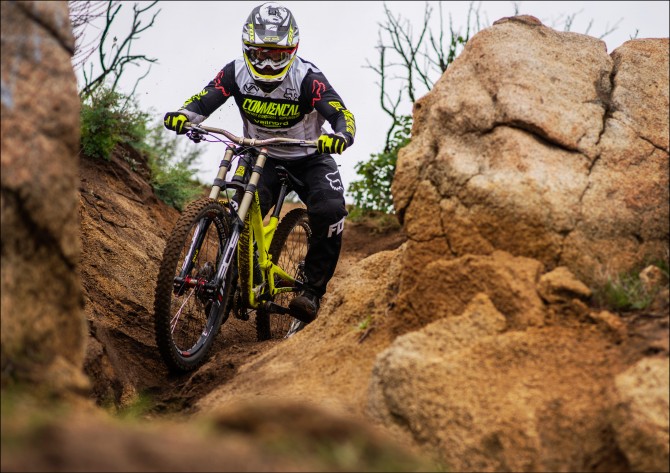Commencal’s New Supreme DH V4
They have been working hard in Andorra! First came the Meta AM V4 and then a host of enduro and downhill team news and now comes their brand new downhill race bike, the Supreme DH V4. It looks like a serious piece of kit, check out Commencal’s in depth explanation on what they have done and more importantly why!
The 4th generation of the Supreme DH V4 pushes all possible limits.
Reinvention.
We had to find new ways to offer our riders even more efficient bikes with more innovation…
Our goal was to create a frame that goes faster. A frame that doesn’t lose speed, but generates it. Today, with the DH V4 we can say that we have got there. This wasn’t easy, a lot of development, time spent thinking and rethinking, but the final solution for our Supreme has been found.
Design
Having a ‘carte blanche’ gave us a chance to put many possibilities to the test, but also there are big responsibilities. Finally we received the approval of our best riders and all the rest a like.
Genesis
Ideas burst forth every day at the office. Sometimes they’re wacky, sometimes there’re genius but they are certainly never boring. The idea of creating a bike with a High Pivot Point (HPP) appeared crazy to many in the office. Another engineering concept…
While technically this concept has very interesting advantages, it is also very aesthetically risky. At Commencal there is no compromise. A bicycle must look beautiful and perform. Two significant criteria.
Max Commencal is a passionate man, he never closes the door to new challenges. We got the challenge we asked for.
So we went with this and we tested the concept on a basic enduro frame with 160mm of travel and 650b wheels.
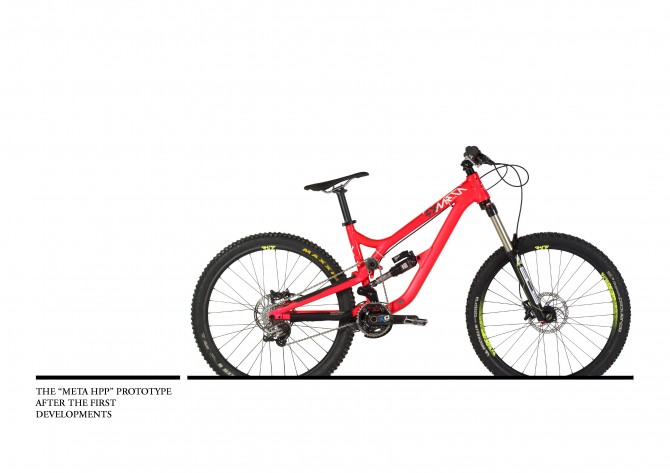
A little shunned initially for being ‘rough around the edges,’ finally the HPP was unanimously fast. For an enduro bike this was an unsuspected capacity, a real step forward as we hope for every time we create a new platform. We shall continue in this direction. This HPP frame allowed us to understand a totally different functionality compared to a conventional bicycle. For example, being able to test several anchoring solutions of the idler with totally different settings allowed us to imagine the design of the Supreme DH V4.
Contact System
One cannot deny that the kinematics of the Supreme DH V4 have changed radically. Still based on a single pivot and linkage system to manage progressivity, its high pivot point and the position of the idler make all the difference.
Why a high pivot point? To obtain the correct rear wheel path which avoids stumbling over obstacles and carries a greater speed through rough sections. It goes back to a fundamental concept for downhill– speed. It is however, not without its drawbacks. Using such a high pivot without an idler would generate a lot of chain tension and the bike would be impossible to ride because of the kickback excess.
Kickback is not only annoying for the rider, it also has an impact on the suspension during pedaling and while riding very rough trails. This is where the idler comes into play. It counteracts the chain effects. As stated earlier, our first prototype was a great help to select the optimum position.
Theory is one thing but it then has to be validated in the mountains. Specifically, by setting the idler on the swingarm in a precise place, we wanted to create an anti squat value high enough to be lively when needed, out of a corner for example.
A downhill bike must pedal well; it must be especially effective from the first pedal stroke… And that’s what we’ve got. Whichever cog is being used, its settings will not be affected. A big advantage.
However, a relatively strong anti-squat value is often incompatible with a low kickback value. The kickback, stemming from the chain tension, is detrimental to the functioning of the rear suspension. This unpleasant kickback transmits how the bodyweight affects the suspension via the chain tension, which effectively prevents the suspension from working freely. It was therefore fundamental not end up with too high a value.
Thanks to the specific positioning of the idler, we could reduce kickback significantly. Thus the operation of the suspension is not affected.
With a rear wheel path which facilitates the work of the suspension, it was necessary for us to revise our way of thinking with regards to the leverage ratio of the Supreme.
Very close to the META V4 in its shape, this allows an excellent grip at the start of the stroke, which then allows an excellent support throughout the middle range of the travel.
A high pivot point avoids the unnecessary consumption of too much travel, which is an important parameter.
Figures are often used as references; the Supreme DH V4 relies on 220mm of travel. Why so much? Think back to our original objective: speed. It all depends on the track. The fastest lines of the track are not necessarily the cleanest. Also, to see ‘huck to flat’ in a race is not uncommon and to bottom out in these sections would slow the bike down.
So you have to see the last 20mm as a solution to prevent bottoming out hard but also see it as a barely reached zone. The first 200mm of travel is actually very close to what is currently found on a Supreme DH V3.
Kinematics would be nothing without an efficient rear shock. Each manufacturer has been involved in developing a setting to work in perfect harmony with our frame.
Modular Geometry
Since the first Commencal Supreme DH, we always wanted to offer bicycles with modular geometry.
Often seen as the Formula 1 of mountain biking, downhill bikes need to adapt to the characteristics of each track and to every riding style. Pietermaritzburg, Fort William, Mont Saint Anne, Vallnord… So many different tracks all demanding the best possible balance.
Within our DH team for example, we have Thibaut Ruffin and Rémi Thirion, two riders with two very different requirements. Two different people to satisfy, along with the rest!
We have therefore decided to create a highly adjustable geometry through a set of specific dropouts and headtube cups. Thanks to them we can adjust the chain stay length, the bottom bracket height and the ‘reach’ without affecting the angles of the bike. Positioned at 62.5°, the head angle is fixed. It’s a value that is universally recognized in the
COMMENCAL/VALLNORD DH Racing Team. Rather than offering a useless adjuster, we opted for a reach setting in order to be able to adjust its position perfectly according to the rider’s preferences, and the track. It can therefore be adjusted between -10/-8/-5/0/+5/+8/+10.
The chainstay length was the subject of our attention. We managed to get a shorter chainstay length than usual, despite the high pivot point and the rearward wheel path. The idea is to keep a good balance of the bike and avoid it getting too clumsy. If you compare the chainstay lengths of the Supreme DH V3 and Supreme DH V4, the difference seems huge (447mm vs 425mm). But on the Supreme DH V4, the chainstay length increases through the travel, this difference lessens.
It is still shorter on the Supreme DH V4 (450mm rather than 457mm) to maintain a lively bike. This value is really useful in understanding the bike. The HPP prototype had an even higher pivot point but we decided to lower it on the SUPREME DH V4 to find the best possible balance between the operation of the suspension and the liveliness of the bike.


